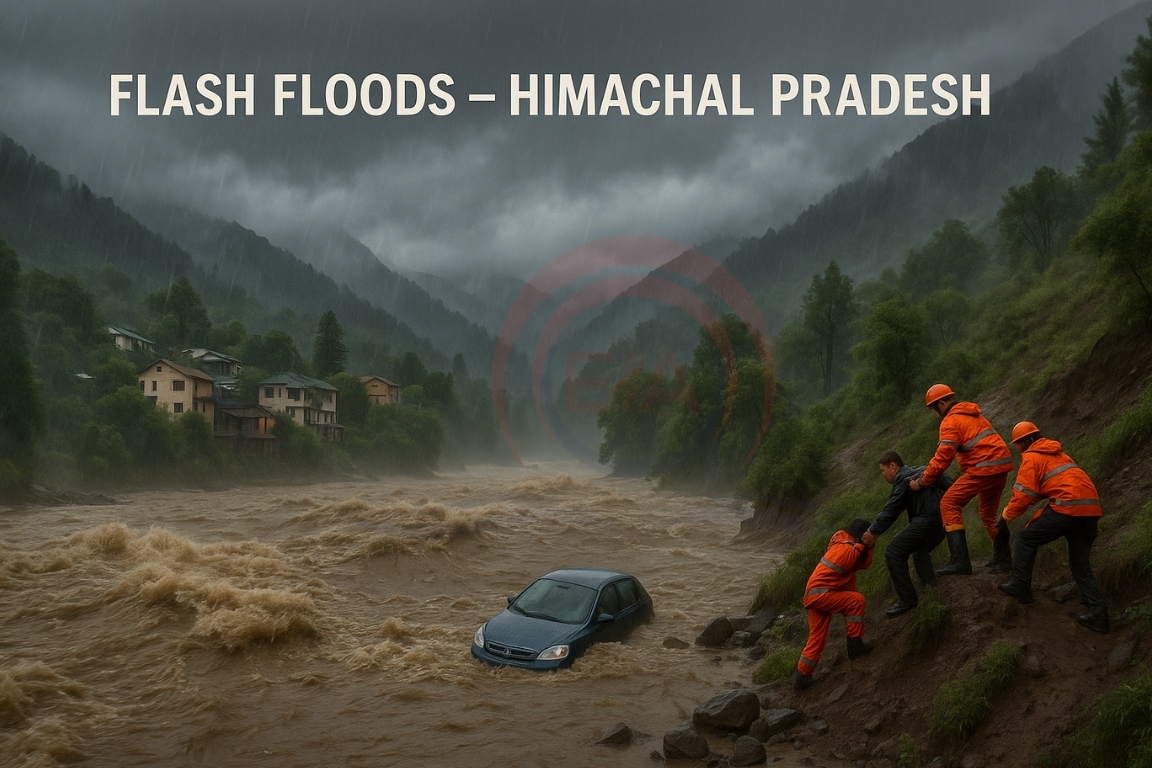Flash floods in Himachal Pradesh’s Kangra district have claimed six lives, with rescue operations affected due to heavy rainfall and two persons still missing.
What are Flash Floods?
- Flash floods are sudden, intense floods that occur within a short period of time, often due to heavy rainfall, cloudbursts, or dam breaches.
- They have a rapid onset and can be highly destructive due to their speed and force.
Causes of Flash Floods:
- Intense Rainfall: When rainfall exceeds the land’s absorption capacity, it leads to surface runoff and flash floods.
- Cloudbursts: Sudden, heavy rainfall over a small area, often in hilly regions, causes violent flooding (common in Himalayas).
- Deforestation & Urbanisation: Reduced vegetation and increase in impermeable surfaces prevent water absorption, worsening floods.
- Glacial Lake Outburst Floods (GLOFs): Melting glaciers in regions like Uttarakhand and Sikkim can suddenly burst, triggering floods.

Regions Prone to Flash Floods in India:
- Himalayan States: Himachal Pradesh, Uttarakhand, and Jammu & Kashmir face frequent flash floods due to steep slopes and cloudbursts.
- Western Ghats: States like Kerala and Maharashtra experience flash floods due to intense monsoons and altered drainage.
- Urban Areas: Cities like Mumbai and Bengaluru suffer urban flash floods due to poor drainage and heavy rainfall.
Impacts:
- Loss of Life & Livelihoods
- Damage to Infrastructure (roads, bridges, dams)
- Disruption in Rescue & Relief Operations
Way Forward:
- Early warning systems
- Eco-sensitive land use planning
- Afforestation and watershed management
- Strengthening disaster response capacity at the local level






It’s amazing to pay a quick visit this web page and reading the views of all colleagues concerning this article, while I am also keen of getting familiarity. http://www.hairstylesvip.com